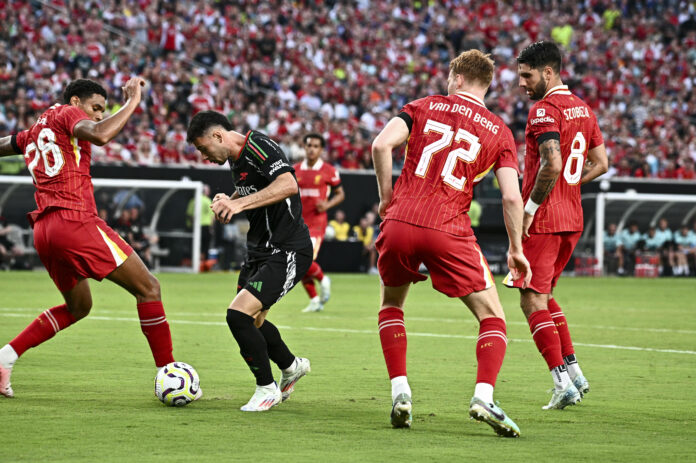Liverpool’s Tactical Nuance in the 2-1 Victory Over Arsenal
Liverpool’s recent 2-1 triumph against Arsenal has sparked numerous conversations about the tactical evolution under their new management. Thanks to the insights from Panenka LFC, we have a clearer view of the strategic shifts that have been instrumental in this victory. Here, we delve into the specifics of Liverpool’s game plan and the roles that key players have played in this nuanced approach.
Insights into Liverpool’s Tactical Shift
In their latest clash, Liverpool showcased a refined approach that Panenka LFC describes as the “Slot Ball” machine. This style was fully operational against Arsenal, with the team demonstrating a fluid tactical play that has started to catch the eye of fans and critics alike. The critical observation here is the tactical switch made by manager Arne Slot, which was pivotal in Liverpool’s gameplay. Replacing Wataru Endo with Diogo Jota, a move that significantly altered the team’s dynamic, was particularly impactful. This change not only brought a fresh pace to the lineup but also adjusted the positional play which benefited Liverpool’s overall strategy.
The Double Pivot: Jones and Szoboszlai
A significant mention from Panenka LFC was the formation of a double pivot in midfield consisting of Curtis Jones and Dominik Szoboszlai. Operating in this capacity, both players were tasked with fluid movements up and down the pitch, enhancing both the defensive and offensive transitions. “As expected from an Arne Slot midfield duo, both players constantly moved up and down the lines whilst providing passing options for their teammates,” noted Panenka LFC. This setup allowed Liverpool to maintain control in the midfield, a critical factor in their win over a strong Arsenal side.

Formation Fluidity: Adapting On the Fly
Liverpool’s ability to adapt their formation dynamically was on full display, transitioning from a 4-2-4 to a 4-1-4-1 during the game. This flexibility allowed one of the front four to press the Arsenal backline aggressively, which disrupted their rhythm and created opportunities for Liverpool. “This seemingly transitioned into a 4-1-4-1, with one of the front four making the jump to press Arsenal’s back line,” Panenka LFC highlighted. Such tactical fluidity is a testament to Slot’s philosophy, where adaptability and pressure are key.
Szoboszlai as the Lone Six
An unexpected yet effective role was assigned to Dominik Szoboszlai, who found himself playing as a lone six at times. This role is traditionally reserved for a defensive midfielder who acts as the primary pivot between defence and attack. Szoboszlai’s adaptation to this position was crucial and demonstrated his versatility and importance to the team’s structure. “This in fact left Szoboszlai as a lone six at times in the midfield, which we never really thought we would see,” stated Panenka LFC.
Conclusion: A New Chapter for Liverpool
The tactical nuances discussed by Panenka LFC underline a significant evolution in Liverpool’s gameplay under Arne Slot. The adaptations and roles assigned in the match against Arsenal not only showcase a team that is versatile but also one that is becoming increasingly cerebral in its approach to football. As Liverpool continues to integrate these tactical shifts, it will be intriguing to see how this affects their performance in upcoming fixtures.
Liverpool’s victory over Arsenal is not just a testament to their ability to secure three points but also an indication of a strategic depth that may well define their season. Thanks to Panenka LFC’s keen observations, we gain deeper insights into the tactical intricacies that could very well shape the future of Liverpool’s footballing journey.




